





E.H. Tepe Co., Inc. (Tepe’s) was a revolutionary catalog showroom shopping experience. Customers simply picked out items from perusing the floor samples, or by rifling through their extensive catalog, filled out an order form, paid for the item(s), and then, voila’, like magic, the order arrived on a conveyor belt just a few minutes later. No more waiting weeks for catalog orders to arrive.
Tepe’s was the distributor of over 22,000 retail items, including jewelry, leather goods, sporting goods, clothing, home furnishings toys, gifts, and so much more!
My boyfriend, Steve, stumbled upon an old E.H. Tepe catalog at an estate sale dated, November, 1978. Flipping through the catalog was like taking a walk down memory lane.
In the jewelry section, there were many simulated blue star rings and necklaces, tiger eye rings for men, stickpins in a variety of shapes and sizes, mosaic turquoise creations, charms & bracelets, I.D. bracelets, watches and many other signs of the time.
Another fun department to peruse was the personal care items, with hard hat hair dryers, lighted mirrors, back and foot massagers, sunlamps and other items promising to make you look good and feel great!
Elmer H. “Sonny” Tepe, Jr., upon high school graduation in 1949, followed in his father’s footsteps, becoming a trained Certified Gemologist. Upon his father’s untimely death (at the age of 48) later that year, he took over his dad’s jewelry repair and manufacturing business. He was later joined by his younger brother, Roy in 1951. Together, they created Tepe’s in 1958.

The first Tepe’s store opened in South Bend, Indiana in 1960. During the course of the next 31 years, they expanded the business to nine additional stores throughout Indiana and Michigan. In 1973 The Kalamazoo area store opened and was located in Portage at 6601 S. Westnedge Ave., where World Market and Michael’s are today.
In 1980, Roy retired and Sonny was joined by his two sons, Mark and Matt. In its heyday, Tepe’s employed over 700 people and customer service was the foundation of their success.
Tepe’s had the most impressive glossy catalogs chocked full of everything you could want or need. They advertised comparative pricing, so that you could see the savings. For example, a Panasonic Tri-mode Cassette stereo, Tepe’s Pre-Christmas Tru-Special price $199.97, Reg. price $237.67, Comparative price $259.95. On the back of each catalog was a mail in order form, where you would mail in your order and provide payment method, billing info. And shipping information. Master Charge, Visa, check or money order were accepted forms of payment.
Former patrons share their fond memories of Tepe’s on the History & Memories of Michiana and Vanished Kalamazoo Facebook pages, including: “We bought our wedding rings there in 1970.” “The Tepe’s were wonderful people.” “Bought my first real stereo system there. I was in rock heaven!” “Every present came from there.” “I remember you’d place your order, then watch it coming on the conveyer belt. It was a great place,” “I remember going with my Mom. Dad would wait in the car.” “I always liked watching for my order to come down the conveyer belt” “Loved this

store, great products and great prices.” “Bought my first GI Joe toy at Tepe’s in 1982.” “My brother & I used to make our Christmas lists from the Tepe & Century catalogs.” “We registered for our wedding there.” “Yes, I bought my high school graduation gift (set of luggage) there. Loved that place.”
In April, 1991, Tepe’s announced they would be closing all 10 stores in Michigan and Indiana, including the Portage store, which was their most profitable store for the six years prior to the announcement. Tepe’s liquidated $10 million in inventory and closed in the summer of the same year.
The recession, the increased cost of advertising and consumers’ spending slowdown were all cited as factors that led to Tepe’s downfall, according to Mark Tepe. Advertising and other costs associated with attracting customers rose dramatically. Among them, the cost of mailing 10 million catalogs the company circulated


annually jumped $400,000 with the U.S. Postal Service increased rates. Witmark took over the space, operating in West Michigan until 1997, with their headquarters in Grand Rapids. Some speculate their demise occurred when the big box stores moved into the area (Best Buy, Circuit City, Toys “R” Us, and Dick’s Sporting Goods, to name a few) that were able to sell the same goods at lower prices.
Sadly, Tepe’s founder, Elmer H. “Sonny” Tepe, died at the age of 87 in 2019.
Sources: History & Memories of Michiana, Vanished Kalamazoo, Southbendadams.com, E.H. Tepe Co., Inc. Catalog (Nov. 1978), KG 4/18/91.
On a side note: If you’re not familiar with Tepe’s, other similar catalog showroom stores include: Century, Service Merchandise, Spiegel, Alden’s and Best & Company.
Jackie Merriam


What do you wish to see every day? Is it a person, a place, a thing? A view? What brings you calm and contentment? Where is home?
Recently, I’ve felt unsettled, a bit lost. Like I need to move, change, do something different. My husband knows this inner turmoil I have. He shared with me an image he had seen. It was a woman with a ladder standing in an open field looking upward to the sky. It was questioning was about why some of us are always looking for the next best thing, the need to explore, to wander, to challenge ourselves, to achieve, the feeling that “the grass is always greener.” But he shared another thought, that the goal isn’t about reaching the end of the trail but the hike itself. You can be content, appreciative. You can dig

In honor of Dr. Seuss’s birthday, March 2nd is designated as Read Across America Day and the month of March is National Reading Month – a month to encourage Americans of all ages to read every day.
March 2nd falls on a Sunday this year, which allows for a whole day to read! No need to worry about

in and become more focused and creative and effective in your current work, your life, your journey rather than look around the corner for the next best thing. You could slow down and pay attention to everything around you.
I’ve been thinking about the idea of home and feeling connected. Over the last four months I have intentionally stayed in a yurt, booked a couple nights at a treehouse village, a rustic log cabin, a converted rental that was a former residence for park rangers, and, of course, many days and nights in my own home. Home is safe and welcoming and constant. Yet, I’m always looking forward to the next trip. A weekend away. I’m not looking for glamping, or world travel, or exquisite vacation experiences. And don’t get
children missing the holiday because school is out, schools will be celebrating all month-long.
Dr. Seuss, (Theodor Seuss Geisel), is the perfect author to be honored on this holiday because of his interest in children’s literacy. In May 1954, Life published a report on illiteracy among school children that concluded children were not learning to read because their books were boring. William Spaulding, the director of the education division at Houghton Mifflin, compiled a list of 348 words that he felt were important for first-graders to recognize. He asked Geisel to cut the list to 250 words and to write a book using only those words, that children would not want to put down. Nine months later, Geisel completed The Cat in the Hat, using 236 words of the words that were given to him. It retained

me wrong, I love being home, I love having projects and getting things done and just being in our space. But I also need to get away, and often go to the woods.
On my most recent trip, I took a slow walk through the woods with my youngest. I looked around with a bit more intention to allow for discovery. I followed behind, not in front of my pre-teen. A kid who loves to just touch stuff and is a bit fearless. He is my water-kid and has an insatiable need to get near the edge of water features, and often ends up in the water, regardless of the season. He throws sticks and rocks into the water, breaks up built up ice and finds treasures on the shore. He laughs mischievously while he ruins my nature photos by throwing snow
the drawing style, verse rhythms, and all the imaginative power of Geisel’s earlier works but it could be read by beginning readers. The Cat in the Hat (over 3 million copies sold in the first three year) and others (Green Eggs & Ham, One Fish, Two Fish, Red Fish, Blue Fish, etc.,) written for young children, achieved international success and remain popular today.
Giesel wrote many more children’s books in the new simplified vocabulary and in the older, more elaborate style. His work includes many of the most popular children’s books, selling over 600 million copies and has been translated into more than 20 languages.
Observing National Book Month is easy. Pick up your favorite books and make some time to read them. You may even wish to boast or share
over pinecones or breaking up shadows cast from trees.
When did we all stop being kids? And that’s the answer. I’m not searching for the next best thing. I’m searching for this feeling of exploring the outside with little thought, to laugh, to discover, to meet this internal need that has no true words to describe it. To be in nature, to be home.
My love came up with this phrase years ago while on trail: “You’re never lost if you’re always home.” 20 original art prints have been randomly placed in this issue of the Good News Paper.
Peace, Love, and Art. -Amy Instagram: @amylgieschen
on social media by using the hashtag: #NatioanlBookMonth.

Graphic Designer: Lauren Ellis
Editor and Publisher: Jackie Merriam (269) 217-0977 - goodnews.jackie@gmail.com Like us on
This publication does not specifically endorse advertisers or their products or services. No part of this publication may be reprinted or otherwise reproduced without the written permission from the publisher.
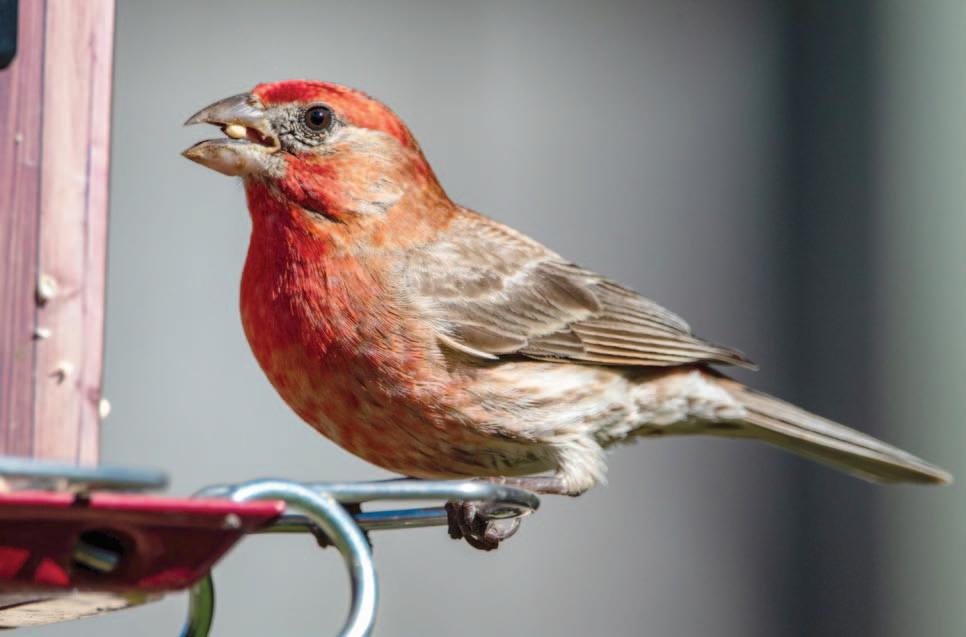
Birds can be divided in 4 categories in Michigan. Birds that live here: year-round, during the breeding season and leave in fall, during the nonbreeding in winter and temporarily during migration as they are passing through. This list of birds consists of year-round birds in purple and nonbreeding birds in winter in green.
1. American Goldfinch – is a foliage gleaner that eats seeds almost exclusively. At feeders prefers nyjer and sunflower.
2. American Robin – is a ground forager that eats mainly insects but will also eat invertebrates and fruit. They also seem to enjoy fruit with insects in them. They will eat dried mealworms, suet, berries and sunflower seeds at feeders.
3. American Tree Sparrow – is a ground forager whose primary food is seeds. They will eat seeds (they love small seeds like millet), berries and insects at feeders.
4. Black-capped Chickadee- is an insect eating foliage gleaner that eats half seeds, berries and plant matter and half animal food (insects, spiders, suet and fat & meat from dead frozen animals). They are easily attracted to birdfeeders.
5. Blue Jay – is an omnivore, ground forager that eats insects, nuts, seeds, grains, dead and injured small vertebrates and can be easily attracted to bird feeders.
6. Carolina Wren – is a ground forager that mainly eats insects and spiders, but will also eat seeds, suet, sunflower seeds and mealworms at feeders.
7. Cedar Waxwing – is a fruit eating foliage gleaner that will supplement their diet with insects. They prefer berry-producing plants but can sometimes be attracted with fresh or dried fruit, berries and mealworms to birdfeeders.
8. Dark-Eyed Junco – is a ground forager that primarily eats seeds but will also eat insects during breeding. At feeders they seem to prefer millet over sunflower seeds.
9. Eastern Bluebird – is an insect eating ground forager that mainly eats fruit during the winter. They will eat suet, mealworms and berries at feeders.
10. European Starling – is an


insect eating ground forager that will eat nearly anything. But while they prefer insects and other invertebrates, they will also eat fruits, grains, seeds, nectar. They will eat at bird feeders and can be prevented by using feeders with cages or using safflower seeds.
11. Golden-Crowned Kinglet – is an insect eating foliage gleaner, that will eat some seeds in winter. They will sometimes eat mealworms, suet and nyjer at feeders.
12. Hairy Woodpecker – is an insect eating bark forager, that will also eat fruit and seeds. They will eat suet and sunflower seeds at birdfeeders.
13. Redpoll – is a seed eating foliage gleaner that will eat millet and nyjer seed at birdfeeders.
14. Horned Lark – is a seed eating ground forager that will also eat insects. They can be attracted by cracked corn, peanut pieces and black oil sunflowers seeds in birdfeeders.
15. House Finch - is a seed eating ground forager that eats seeds, buds and fruit. They will eat black oil sunflower, millet and milo seeds at birdfeeders.
16. House Sparrow – is an omnivore ground forager, that eats mostly grains and seeds. They love birdfeeders with millet, milo and sunflower seeds.
17. Mourning Dove – is a seed eating ground forager that will eat sunflower seeds, safflower seeds, millet, peanuts and corn at birdfeeders.
18. Northern Cardinal- is a seed eating ground forager that eats mainly seeds and fruit with some insects.
but will also eat many other seeds.
19. Northern Flicker – is an insect eating ground forager that will also eat fruits and seeds in winter. They will eat suet, nuts, seeds, fruit and berries at birdfeeders.
20. Northern Mockingbird- is an omnivore ground forager, that eats mainly insects in summer and mostly fruit in fall and winter. They can be attracted to bird feeders with suet, fruit, mealworms and seeds.
21. Pileated Woodpecker – is an insect eating bark forager that mainly eats insects but will also eat fruits and nuts. They will sometimes visit feeders for seeds or suet.
22. Pine Siskin – is a seed eating foliage gleaner that eats mainly seeds of pines and other conifers but will also eat insects. They will eat at bird feeders and prefer smaller seeds without tough shells like thistle and black oil sunflower. They will also sometimes eat suet.
23. Purple Finch – is a seed eating foliage gleaner that eats mainly seeds, but also eat soft buds, nectar, berries and fruit and sometimes insects. They will eat nyjer, millet or sunflower seeds at birdfeeders.
24. Red-Bellied Woodpecker- is an insect eating bark forager that mainly eats insects but will also eat nuts and seeds and fruits. They will eat suet, peanut and sunflower seeds at birdfeeders.
25. Red-Breasted Nuthatch – is an insect eating bark forager that eats mainly insects in summer and seeds
in winter. They enjoy peanuts, sunflower seeds and suet at bird feeders.
26. Red-Headed Woodpecker –is flycatching omnivore that eats insects, fruits and seeds, nuts, corn, suet. They will eat at bird feeders.
27. Rock Pigeon – lives in cities and is a seed eating ground forager. They like eating seeds and fruits at birdfeeders.
28. Song Sparrow – is an insect eating ground forager that eats mainly insects and invertebrates in the summer and seeds and fruits year-round. They will eat a variety of seeds at birdfeeders including sunflower, safflower, millet and nyjer.
29. Swamp Sparrow – is an insect eating ground forager that will also eat seeds, fruits and invertebrates. They will eat at feeders if it is by their wetland habitat
30. Tufted Titmouse – is an insect eating foliage gleaner that eats mainly insects in summer, but will also eat seeds, nuts and berries. They will eat suet, sunflowers seeds, and peanuts at birdfeeders.
31. White-Breasted Nuthatch – is an insect eating bark forager that will also eat seeds, nuts and sometimes corn. They will eat sunflower seeds, peanuts, suet and peanut butter at birdfeeders.
32. White-Throated Sparrow – is a seed eating foliage gleaner that will also eat insects. Will visit bird feeders for millet and black oil sunflower seeds.
33. White-Winged Crossbill – is a seed eating foliage gleaner that will eat insects in summer. They mainly eat seeds from the cones of spruce and tamarack. They will occasionally visit feeders that have a good finch mix, like Finches Feast.
Birds that are ground foragers are going to prefer eating food that is on the ground or bird feeders that are seed trays or platform feeders. Perching birds that are foliage gleaners are going to prefer birds that have perches on them. Bark foragers are going to prefer suet feeders or feeders they can climb on.
Information from the All About Birds website,www.allaboutbirds.org
Terrie Wedel
Wedel’s Nursery, Florist & Garden Center


When we talk about the grandeur of nature or the miracle of life, it’s usually on a grand scale. But the marvel of nature’s ability to design and engineer can also be seen in its smallest details.
In summer, I love to visit the edges of ponds and rivers to video and photograph dragonflies. When you see a dragonfly launch off a twig or cattail stem, don’t leave. Dragonflies often dart away to hunt and then return to the same perch to watch for prey. Knowing this behavior has helped me capture some of my best images.
Dragonflies are masters of flight. They can hover in place, fly backward, and even pivot mid-air with astonishing precision, thanks to their ability to independently control their two pairs of wings. This unique capability allows them to generate both lift and thrust simultaneously, enabling quick acceleration and agile maneuvers. Reaching speeds of up to 35 miles per hour, dragonflies are among the fastest flying insects, able to hunt prey mid-air with incredible accuracy—aided by their 360-degree vision compound eyes.
While we admire dragonflies for their delicate beauty and aerial acrobatics, a tiny feature at the tip of their wings called the pterostigma (pro-
nounced terra-stig-ma) tells an even more remarkable story of nature’s mastery of bioengineering.
This small, pigmented patch on the leading edge of each wing is far more than decorative. The pterostigma plays a crucial role in stabilizing the dragonfly during flight. Acting as a counterweight, it reduces wing vibrations, known as “flutter,” enabling dragonflies to execute precise maneuvers such as hovering, darting, and gliding.
A closer look at the pterostigma reveals its intricate construction.
Unlike the rest of the dragonfly’s wing—a thin, transparent chitinous membrane supported by a network of veins—the pterostigma is thicker and denser because of color pigment granules that comprise this specialized cuticle layer which adds miniscule weight that perfects the wings aerodynamics.
The pterostigma typically spans just a few millimeters, varying by species. Despite its tiny size, it has a significant impact on flight mechanics. Researchers have measured its mass to be about 10% heavier than an equivalent area of the wing membrane—a seemingly small difference that profoundly influences the aerodynamics of the entire wing.

This tiny feature exemplifies nature’s ingenuity, achieving complexity and functionality with remarkable efficiency. For dragonflies, the pterostigma ensures stability during high-speed hunts, enabling them to catch prey mid-air with astonishing precision.
A dragonfly’s ability to fly and hunt not only depends on its powerful muscles or sharp eyesight but also on this small patch of pigment. Observing such details deepens our appreciation for the hidden wonders of the natural world.
The pterostigma on a dragonfly’s wing is a testament to the brilliance of bioengineering in nature and a glimpse into the elegance of evolutionary adaptation. Yes, the pterostigma’s size, weight, composition, and placement make it a work of natural
design genius, allowing dragonflies to achieve remarkable flight capabilities with precision and minimal energy expenditure.
As science continues to uncover the secrets of the pterostigma, it reminds us of the endless marvels waiting to be discovered in even the smallest features of the natural world. The next time you see a dragonfly darting through the air, take a moment to marvel at this micro-engineering masterpiece.
James Coppinger











For book recommendations from your Kalamazoo Public Library Staff go to www.kpl.gov/blog/
WWooing the Witch Queen ooing Stephanie Burgis (Bramble)
This cozy romance features a librarian hiding out as a dark wizard, a witch queen who'd rather nerd out about experiments, and the most wonderfully supportive found family. This has all the tropes you love of romantasy with the added bonus of witty banter, snarky witch queens, and a heart-melting romance. Give this one to fans of The Princess Bride.
by Freya
IsoIsolla: A Noa:Novveell Allegra Goodman (The Dial Press)
This novel is based on the true story of Marguerite de la Rocque, an aristocratic French girl who was marooned with her lover on an island off of Canada in the 1500s. When her parents pass away, she's entrusted to a guardian who seeks adventure and uses her fortune to finance his travels. Readers will enjoy her adventures as she makes a new life.
Rochester, NY

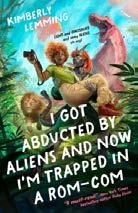
Greece Public
FFamousLamousLastWastWorordsds Gillian McAllister (William Morrow) Cam can't believe it when her husband Adam takes three hostages in an abandoned warehouse. Seven years later, Adam's betrayal rears its ugly head again. Will Cam turn to amateur sleuthing, or put everything behind her and find closure? McAllister uses her standard smooth and emotional style to make sure all the puzzle pieces click together for a satisfying ending.
Nickolas Butler (Sourcebooks Landmark)


A cute story about Lucie, whose daughter calls into a radio show for people looking for
Aiden, the show’s host, is taken by her honesty and invites her to the show to document her quest for love. It's a bumpy ride, but Aiden is there the whole way! Readers will
and the secondary characters are chef's kiss.
Cincinnati and Hamilton County Public Library, OH
NoveList read-alike: Is She Really Going Out With Him? by Sophie Cousens
Hana, a librarian in a small town in Minnesota, lives a quiet life until the day a detective informs her of her close friend's murder. Knowing her friend's death is tied to her, Hana’s afraid she's next. This historical thriller alternates between present day and 1995 Bosnia with a plot that’s intense and gritty, and writing that's moving and heartbreaking.
I Got Abducted b I Got Abducted byAlyAliensandiensand NoNow I'm TwTrrapped in a Rom-Com apped Kimberly Lemming (Berkley)
When Dory Valentine is abducted and transported to another planet, she ends up falling for not one, but two sexy aliens. As you might expect, this book is funny, sexy, and very fast-paced. The subplot about her alien abduction—and the reasons behind it—is interesting and intricate. Readers will absolutely look forward to more from this up-and-coming author.
Something in the W in the Walallsls Daisy Pearce (Minotaur Books)
Mina, a newly minted child psychologist, meets Sam, a journalist, who seeks her help on a piece about Alice, a teenager who claims to be possessed by a witch. Mina agrees, and they find themselves in a very unsettling small town, experiencing strange things that they can’t explain. This book is just spooky enough that you may want to read it with the lights on!



Ps
Dark and diabolical, this is a tale of a governess pushed to the limit. Arriving at an estate to care for two spoiled brats, she must deal with a barrage of verbal and physical abuse, until Christmas arrives and she can take it no more. This gruesome gothic tale full of dark wit and horror is reminiscent of Sweeney Todd
AKilAKilllingCoingColldd Kate Alice Marshall (Flatiron Books)
When Theo arrives at her new fiance's family retreat, she realizes she has been there before. As the secrets this family has been holding onto for years start to come out, this drama goes in a dark, suspenseful direction. Just when you think you know where this is headed, it becomes full of twists and turns. Yes please!
Karen Thompson Walker (Random House)
After Dr. Henry Byrd is summoned by police to see Jane O. at the psychiatric hospital, they want him to reveal her confidential information: has she really lost three days under a dissociative fugue, or is she faking it to cover up a crime? This unique novel explores the idea of alternate and parallel realities, grief, friendship, and trust.
FFearlearless and Fr ess and Free:ee: AMemoirAMemoir Josephine Baker (Tiny Reparations Books)
Think of home … and what does the word, the concept of home, mean to you? For most of us, the idea of home brings with it a sense of safety and stability, that place that is our personal oasis in a mad, mad world. We may think about our present home or the home of our childhood. We may dream of the home we would like to someday own. Perhaps the concept of home evokes memories of heartwarming moments with family and loved ones, the place and the people within that hold our heart.
The phrase “home sweet home” has been used over centuries. The first recorded use of a similar phrase was in John Howard Payne’s 1823 opera Clari, or the Maid of Milan, which featured a song titled “Home! Sweet Home!” The sentiment, however, dates back to surely the first cave person who found refuge in a cave from the fearsome beasts and the variable weather outside.
Similar phrases have become common over the years: there’s no place like home; home is where the heart is; East or West, home is best. Wherever one’s home is located, for most all who have that shelter, it is a place
that offers comfort and rest.
The recent wildfires in California have been a painful reminder of the importance of home, and how devastating the loss when that home vanishes in fiery moments. It is not only a financial loss, but even more a loss of our sacrosanct sense of safety in the world. It can feel as if a part of us, our very identity, has been taken away.
Witnessing that loss for others, one hopes, should be a reminder of how important it is to protect our homes as well as those of others. We live in a time when government (non)officials feel free to bang on doors and demand entry. People who often have lived in this country and called it home are abruptly ripped from their safe place, their families, their lives, and tossed into the cold unknown.
Most have taken on jobs in the community and pay taxes even while not allowed to partake of government services. Most are here not because they are criminals, not because they are raving mad, not because they are drug mules, but because they have sought freedom from violence and poverty. They were seeking a place

they could call home.
There was a time that we lived by the theology of welcoming the stranger. We were proud to live in a land of liberty: Give me your tired, your poor, your huddled masses yearning to breathe free. When did this welcome fade? When did we close our hearts to the suffering of our neighbors and refuse them the ability to find a new home?
We may lock our own doors and bolt the gate against all intruders. But we must take care not to lock away our hearts from the suffering of others in our communities. That may be the very moment we lose our humanity—and most certainly have forgotten our theology. As the child of immigrants—and aren’t we all—I am keenly aware of the human need for a place where we can set down roots. When my parents came to the United States as refugees from Soviet occupation during World War II, they were warmly welcomed. I would not deny that to anyone so deserving.
Zinta Aistars



“To walk in nature is to witness a thousand miracles” – Mary Davis
When you read this, we will be standing at the threshold of March. For those who relish swooshing down ski slopes, laughing with delight while holding on tight to a saucer flying down a hill, or rolling packed snow into stackable balls to clone Frosty the Snowman, there may be a wish that March will roll in like a lion bringing with it a few more snow-filled play days.
I anticipate others will be pressed against the door soon opening into March, hoping that on the other side of the entryway there is a flock of lambs promising warm temperatures and all things green.
I also anticipate most of you reading this had an opportunity to play with the polar bears a few weeks
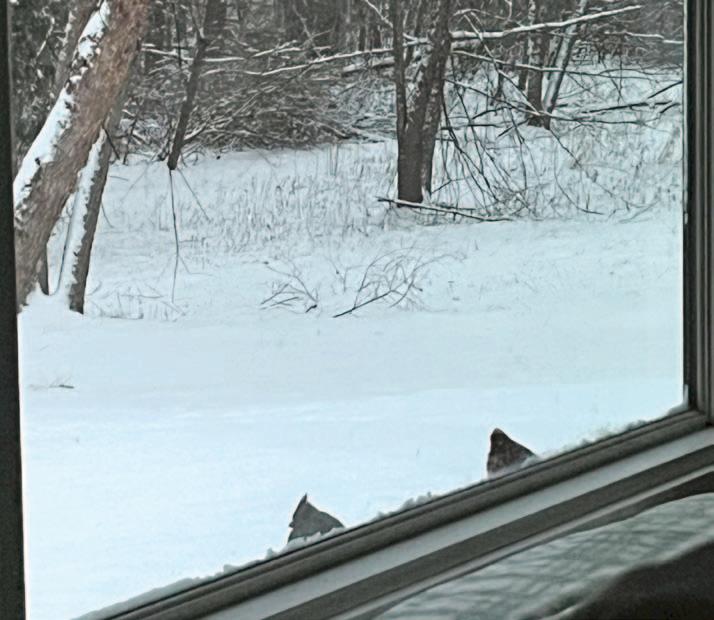
ago, i.e., experience the polar vortex that left most celebrating heat wave sensations when the thermometer read thirty-five degrees after enduring temperatures fifty degrees colder when including the wind’s biting teeth.
On one of the coldest mornings during the polar bear dance, I found myself marveling at nature. At the beauty of the pristine landscape, sure, for fresh untouched snow is always exquisite to behold as it offers such messages of “grace,” “tranquility,” “stillness,” “be cozy”.
Yet, what was more impactful was how joyously the birds were singing. I had felt the awe in mother nature earlier in the winter when observing deer and their wool coats they grew at what felt like an overnight event. The same awe at mother nature’s



grace-filled adaptability to what life brings occurred when watching the geese and ducks land on ice on our lake one day and then swim as if their bellies were floating in warm bath water the next.
Fast forward back to the bird songs. As my boots crunched against the frozen snow, in that squeaky way footsteps sound when it is too cold to see one’s breath and nostrils begin to feel like they are freezing shut with each inhale, I was amazed at how I could hear the birds singing in the trees.
As I hurried back to our entry door, I thought less about just how crisp the air felt in my nose and found myself bursting into a giggle thinking of polar bears dancing in the snow.
Ah, and then that joyous feeling one can get when crossing the
threshold from rosy-cheeked, teeth chattering, shoulders hunkered as they bury the neck cold into the big armed embrace of cozy, snuggle in, hot cocoa sipping heat.
It’s pretty cool – no pun intended – how much our perspective can change when we choose to see a frigid polar vortex as playful dancing bears.
Thanks to singing friends with wings whose voices filled the air with the sweetest sounding melodies. I can’t help thinking the lyrics included “when life brings subzero conditions, sing, joyously sing. The polar bears can only dance so long. Our song promises there is always Spring.”
Christine Hassing https://christinehassing.com


2025 marks the 80th anniversary of the end of World War II and all of its related historic events. From March 7-17, 1945, one of the most significant battles of the war took place at the Ludendorff Bridge, in the small resort town of Remagen, on the Rhine River in western Germany.
Adolf Hitler’s Third Reich was in its last two months of existence, the German Army was in heavy retreat, and the Allies were in their final stages of winning the war. However, that didn’t make the fighting by the existing German troops—ordered by Hitler to remain fighting “to the last man” —any less deadly. Company A of the U.S. 27th Armored Infantry Battalion, 9th Armored Division, had been engaged in this fighting since arriving in liberated France six months earlier. The company was under the command of Germanborn, Nebraska-raised Lt. Karl Timmermann.
Accompanied by Army Engineers, Company A fought its way to Remagen—where the Ludendorff bridge was built during World War I to expedite rail traffic between Germany and France—looking for a place to construct a pontoon bridge to move personnel and equipment across the Rhine. However, when they reached Remagen, Timmerman’s outfit was astonished to find the Ludendorff Bridge still standing, knowing that the Germans had destroyed nearly all other bridges behind them. Hundreds of German troops, civilians, and tanks were still moving across the 1,200-foot-long steel bridge.
It was a “cold, gray, drizzly” March afternoon, shortly before 1:00, as the battle for the bridge began with the Americans’ advance. The German




15th Army set off a large explosive charge under the bridge’s approach ramp, creating a 30-foot crater. For about 40 minutes, the Americans paused their assault, thinking the Germans were about to blow up the bridge.
But that explosion never came. What the Americans didn’t know at the time was that, before their arrival, the Germans had already tried to destroy the bridge, but their 6,200 pounds of explosives, while damaging the bridge, didn’t make it collapse.
Supreme Allied Commander Dwight Eisenhower later called the discovery of the standing Ludendorff “a great surprise” that presented a remarkable opportunity.
Seeing that the bridge still stood, Timmermann ordered Company A to resume the assault to take the bridge. While the infantry resumed their fighting, the Engineers already began filling the crater. In just three
hours, the bridge was captured, and more than 300 German troops and civilians surrendered. By the end of the day, 8,000 American troops had crossed the Rhine with new M26 Pershing tanks, jeeps, and other equipment. Ironically, the Americans would now defend the same bridge that the U.S. 8th Air Force had tried to destroy just months before.
Hearing that the first Americans had crossed the bridge, the incensed Hitler took direct control, ordering its immediate destruction by any means, including the most advanced weapons in the world in March 1945.
The Germans attacked for 10 days, with American anti-aircraft personnel and airplanes joining the fight.
In addition to two panzer (armored) divisions and infantry, Hitler ordered the use of Stuka dive-bombers, frogmen armed with explosives, and train-mounted 175 mm anti-aircraft guns leveled at the bridge. The bridge
and its American defenders were attacked by more than 360 German aircraft including the world’s first military jets, the Messerschmitt Me 262 fighter and the Arado Ar 234 bomber. In the end, Hitler ordered the use of his feared V-2 rockets, the only time they were used against targets in Germany. The 11 rockets killed six American soldiers and a number of civilians; most of the V-2s landed miles from their target.
All the while, as Germans pounded the bridge and American soldiers, the Army Engineers constructed two new pontoon bridges to eventually replace the weakened Ludendorff. By March 17, 125,000 troops and equipment had crossed the Ludendorff Bridge. That afternoon, about 200 Army Engineers were working on the bridge when they heard a dull, sustained growl. Most of them ran and made it off the bridge just before it collapsed into icy waters of the Rhine. But 28 were killed, 63 injured.
Once the bridge collapsed, most of the German troops withdrew, having fulfilled their orders.
As a result of the actions of the American troops at Remagen, the war in Europe was shortened by an estimated three weeks, and an estimated 35,000 lives saved.
Tony Ettwein
HistoryZoo1837@gmail.com
A: The stone towers at the west end of the 1,200-foot Ludendorff Bridge
B: U.S. Army medics await the recovery of Army Engineers after the bridge collapse, March 17, 1945
C: U.S. soldiers knew who to thank for capturing the bridge at Remagen and keeping their feet dry


feel uncertain or unkind.
What does success truly mean to you? This question likely stirs a whirlwind of emotions, as the definition of success varies greatly from person to person. It is essential to inspire one another to pursue what resonates with our passions, rather than adhering to societal expectations. Effective leadership is deeply rooted in compassion, characterized by a fervent desire to guide others toward fulfilling their dreams with kindness and understanding.
a powerful source of encouragement, reaffirming to them that they are valued and appreciated. Many individuals grapple with self-doubt and may question the worthiness of pursuing their dreams. Yet, having someone who believes in them—even in small ways—can ignite a spark of courage, empowering them to chase what once felt like unattainable aspirations.
Society often bombards us with the message that achieving success requires fierce competition with one another. While this competitive spirit can serve as an inspiring catalyst in sports arenas, it’s crucial to remember that true accomplishment often flourishes when we lift each other in our daily lives. Life presents an array of challenges that can feel even more formidable when we’re fixated on outshining our peers. The most significant competition we face is with ourselves—an ongoing journey
to transform into a better version of who we were yesterday.
Everyone is a vibrant mosaic of unique gifts and talents that contribute to their path to success. This diversity is not merely a fact; it is a profound and beautiful aspect of our shared human experience, weaving a rich tapestry in which everyone can shine brightly. By actively supporting one another and generously sharing our knowledge, we can foster an environment in which all can thrive, particularly in a world that may often
I find immense solace in the quote, “People won’t remember you for the amount of money you have, the car you drive, or the clothes you wear, but they will remember you by how you made them feel.” Although the source eludes me, the sentiment strikes a profound chord. It underscores the importance of our interactions and the impact of treating others with care and respect. We all aspire to create a legacy that endures, and we hold the beautiful opportunity to shape what that legacy looks like. Taking the time to support others as they navigate their journeys can leave a lasting imprint on their lives and ours.
In our busy lives, demonstrating genuine care for others can become







When an opportunity arises to help someone, pause for a moment to appreciate the trust they place in you by seeking your support. Assisting others can be viewed as a treasured gift, offering you the chance to witness their growth and revel in their successes. Instead of feeling envy toward another person’s achievements, try to view setbacks as valuable opportunities for learning and personal development. Each one of us possesses unique strengths to share, and recognizing our individual qualities can significantly elevate our self-esteem and sense of self-worth. Together, let’s endeavor to cultivate a kinder world by uplifting each other, embracing the diverse strengths we all possess, and celebrating the goodness that everyone brings to the table.
Dr. Julie Sorenson, DMFT, MA, LPC





Gather the kids and embark on a memorable summer journey through the enchanting outdoors, where a camping trip promises to unveil a world of adventure waiting just for your family. Imagine those cherished moments spent around a crackling campfire, sharing stories that evoke laughter, engaging in friendly competition with a game of corn hole, and indulging in gooey, chocolaty s’mores that melt in your mouth.
Whether you prefer the nostalgia of pitching a tent beneath the stars without modern distractions or the comfort of a cozy motorhome, Michigan boasts an abundance of spectacular camping spots. From rustic campsites hidden among towering
trees to more glamorous locations equipped with modern amenities, there is a perfect setting for every family’s preferences.
Unplugging from the daily grind and immersing yourself in nature with your children not only fosters connection but also keeps boredom at bay. There’s an array of activities to ignite their enthusiasm—from fishing in crystal-clear lakes to galloping on horseback through scenic trails, hiking amidst breathtaking views, or paddling through tranquil waters on a kayak. You can show them the ropes of setting up a tent, cooking sizzling meals over the open fire, or even casting a fishing line into the water. Some campgrounds go above and be-
yond, offering engaging activities like dodgeball, tennis courts, sparkling pools, and even thrilling water parks.
The true magic of camping lies not just in the activities but in the time spent together, creating bonds through laughter and shared experiences. Picture a leisurely stroll to a lively bingo night or a spontaneous dance party at the campground— these are the adventures that become treasured memories. Singing campfire songs under a canopy of stars and relishing breakfast or dinner prepared over the fire adds to the charm. You can involve your kids in planning meals by exploring exciting campfire recipes, igniting their creativity.
Don’t forget to pack your bikes for exhilarating rides along nature trails! Each turn can lead to a delightful surprise, whether it’s the soft glow of an early morning sunrise or the vibrant hues of a breathtaking sunset painting the sky. And remember to bring along a picnic basket filled with treats, for you never know where the trails may lead you, echoing the sentiment that “not all who wander are lost.” Let this summer be one of exploration, joy, and unforgettable family moments.
Dr. Julie Sorenson, DMFT, MA, LPC







Celebrate St. Patrick’s Day with something special and sweet, which will help to remove any bitterness in the day!
Food stylist/photographer: Laura Kurella
St. Patrick’s Day means many things to many people. In the secular world it usually means parties where people wear (and consume) things green. However, this day was initially established to honor a saint of a man who didn’t start out life that way- a man named, “Maewyn.”
Born in Wales in around 385 A.D., at age 16, Maewyn was sold into slavery, which caused his heart to turn away from his pagan ways and toward GOD, whom he prayed to help end his plight.
Miraculously escaping slavery, Maewyn fled to a monastery where he changed his name to Patrick, and then spent the remainder of his life helping other pagans find their way to GOD.
Appointed the second bishop to Ireland, Patrick continued his mission for a good thirty years until he passed on March 17, 461, which is also the date that was chosen to honor him.
While many think that shamrocks appear on this day just for decoration, in truth they have far greater meaning because St. Patrick used to use the shamrock to demonstrate how the Father, Son, and Holy Spirit all exist as separate elements of the one single Holy Trinity.
Like many children, I used to spend a little time every summer looking for four-leaf clovers in my best friend’s front yard, but never found any throughout childhood. However, many, many decades later, while tending to my parent’s grave (on my mother’s side of the plot) I spied my first (and only) four-leafed gem! I was so stunned by the find, not just because of the “what” but also because of the “where” I found it, which made me feel cosmically connected to Mom in that moment. God bless her!
A precious memento, I pressed that
1 jigger Irish whiskey smooth as the wit of the land
1 tablespoon brown sugar sweet as the tongue of a rogue
1 cup freshly-brewed coffee strong as a friendly hand
Heavy cream as rich as an Irish Brogue
You are to heat a stemmed whiskey goblet. Pour in one jigger (1 ½ ounces) of Irish whiskey.
Add one tablespoon of brown sugar. Fill with strong black coffee to within one inch of the brim. Stir to dissolve the sugar. Then top off with heavy whipping cream that you slightly aerate by pouring it over the back of a spoon, which will cause it to float on top. Do not stir after adding the cream as the true flavor is obtained by drinking the hot coffee and Irish whiskey through the cloud of cream.
Minty Mini Leprechaun Pies 24 marshmallows
1/4 cup milk
1/4 cup crème de menthe (green
colored)
2 tablespoons crème de cacao
1 cup heavy cream
1 sleeve Thin Mint cookies, crumbed (about 16 cookies)
2 tablespoons melted butter
Melt marshmallows in milk over medium heat in a small saucepan and let cool. Watch carefully as to not scorch marshmallows. Add crème de menthe and crème de cacao. In a chilled mixing bowl, whip cream until stiff peaks form; fold into marshmallow mixture and set aside. For the crust, in a separate bowl, add melted butter to the cookie crumbs. Press about 2 Tbsp. cookie crumbs into the bottom of 6 (4-oz.) jars, cups, or bowls. Divide pie mixture evenly among them too. Place jars in the freezer for about 2 hours. Allow to thaw on the countertop for 10 minutes prior to serving. Garnish each with a swirl of whipped cream and an extra cookie, or crumble more cookies and add those. Best served chilled. Makes 6 servings.

clover onto a page that has my favorite prayer that comes directly from Jesus (Matthew 6:9-14), and have it placed where I can view it every day!
Clover is a reminder of St. Patrick, and while many of us tend to focus on wearing and even drinking things green on this day I think we should also take some time to celebrate the man behind it, and raise whatever it is we choose to consume on this day to honor him, such as a well-made cup of Irish coffee!
Believed to have originated in a Limerick airport during the cold and miserable winter of 1937, this airport was often visited by the likes of John F. Kennedy, Humphrey Bogart, Eleanor Roosevelt, Edward G Robinson, Ernest Hemmingway and even Douglas Fairbanks Sr.
One night the weather was so bad that it had grounded several flights and filled the airport with many a VIP. The cook decided he needed to whip up something both special, warm, and Irish to impress his prestigious guests.
Starting with freshly brewed coffee, kicked up with a splash of fine Irish
whiskey, he topped off his warm and flavorful blend with a crown of rich, and fluffy, freshly whipped cream! Guests were very impressed with its taste, prompting them to ask what it was. The cook politely replied, “What you have there is the finest coffee that will ever cross your lips. Irish coffee is what it is!”
While you can buy something that tries to replicate the taste, I can personally convey that nothing comes close to the honest-to-goodness real thing.
If there is ever a day to go the distance, St. Patrick’s Day is the day to make yourself a real Irish coffee. Here now is an oh-so pleasing way to let a little bit of Irish cross your lips this day, and a few emerald treats that pair well with it, too. Enjoy and happy St. Patrick’s Day!
Laura Kurella is an award-winning home cook who loves to share her recipes from her Michigan kitchen. She welcomes your comments at laurakurella@ yahoo.com.

3/4 teaspoon cream of tartar
1 teaspoon unrefined salt Frosting 1 cup butter, at room temperature 4-5 cups powdered sugar
1 teaspoon pure mint extract optional: green

3/4 cup self-rising flour
1/2 teaspoon sea salt
2 ounces dark chocolate
4 ounces butter
3/4 cup fine sugar
3 ounces cooked mashed potato
2 eggs, beaten
4 tablespoons milk
ICING
4 ounces dark chocolate
4 fluid ounces heavy cream
1/4 cup powdered sugar
3 tablespoons Irish cream liqueur
1-ounce Irish whiskey (optional)
Preheat the oven to 375 degrees.
Grease and line 8-inch cake tins. Sift flour and salt into a mixing bowl. Melt chocolate in a bowl placed over
a saucepan of hot water. In a separate bowl, cream butter, and sugar together until fluffy, then beat in the chocolate and mashed potato. Gradually beat in the egg, adding a little flour with each addition. Fold in the rest of the flour and stir in the milk. Divide mixture between cake tins and bake for 25 to 30 minutes or until top is firm but springy to the touch. Remove from the oven and after a few minutes; turn out on a cooling rack. While the cake is cooling, make the icing. Melt the chocolate as before, stir in the other ingredients and mix well. Use the icing to sandwich the cake layers together and coat the top and sides of the cake.
30 fudge mint cookies, crushed (about 1 3/4 cups) 2 tablespoons butter or margarine, melted
FILLING
4 oz semisweet baking chocolate
3 (8 oz) packages Neufchatel (or cream) cheese, softened 1 cup sugar (or sweetener)
4 eggs
1/3 cup green crème de menthe liqueur*
TOPPING (Optional) Chocolate Syrup
Heat oven to 300 degrees. Wrap foil around bottom and side of ungreased 9-inch springform pan. In a large bowl, mix crust ingredients with fork until crumbly. Press in bottom and 1 inch up side of pan. Bake for 12 minutes. Cool 30 minutes.
In a small microwavable bowl, microwave chocolate on High 45 to 60 seconds, stirring once halfway through microwaving, until melted. If necessary, continue to microwave on High in 15-second increments, stirring until smooth. Set aside.
In a large bowl, beat cream cheese
and sugar with an electric mixer on medium speed, scraping the bowl frequently, until smooth and creamy. Add eggs, one at a time, beating until smooth after each addition. Stir in liqueur. Pour filling evenly over the crust.
Drop 8 to 10 tablespoonfuls of melted chocolate randomly onto the filling, allowing chocolate to sink into the filling. With a table knife or small spatula, cut through chocolate and filling to swirl for marbled design. Bake 1 hour 10 minutes to 1 hour 20 minutes or until set 2 inches from the edge of the pan. Remove from the oven; run the knife around the side of the cheesecake to loosen. Return to the oven; turn the oven off and open the door slightly. Cool cheesecake in the oven for 1 hour. Remove from oven to cooling rack; cool at room temperature 1 hour. Refrigerate for 3 hours.
To serve, remove the side of the pan. Slice cheesecake then drizzle with chocolate syrup just before serving, if desired.

1/3 cup Andes mint candies or baking chips
In a large bowl cream together butter, vegetable oil, 1 1/2 cups sugar, powdered sugar, water, eggs, and vanilla. In a medium bowl whisk together flour, cocoa powder, baking soda, cream of tartar, and salt. Add dry ingredients to wet ingredients and mix until combined. Cover [i]tightly[/i] with plastic wrap and chill for 30 minutes. Uncover the dough. Place remaining 1/4 cup sugar on a small plate. Grease a large baking
sheet (you’ll need a couple if you have them). Roll dough into balls, slightly larger than a golf ball, and place on a baking sheet 3-4 inches apart.
Use the bottom end of a tall glass cup (or the bottom of a small jar) for pressing the cookies. Spritz the bottom of the glass/jar with cooking spray then dip the bottom into the sugar. Press cookies to about 1/2-inch thickness. Let the edges of the cookie dough squish out about 1/4 inch past the edges of the glass. Bake at 350 for 8-10 minutes. (they
should still be slightly undercooked) Allow to cool for at least 10 minutes on the baking sheet before transferring to a cooking rack. Baking the remaining cookie dough in batches until you’ve used all the dough. While the cookies are baking or cooling, prepare the frosting. Cream the butter for 3 minutes until very light and fluffy (do not cheat, do it for the full 3 minutes). Add the powdered sugar one cup at a time until desired consistency and sweetness is reached. (I used about 4 cups
of powdered sugar) Mix in the mint extract. Taste, and add powdered sugar or mint extract as desired (I used the amounts listed). Mix in green food coloring if desired. Store covered in the fridge until ready to use.
For the drizzle, melt Andes mints on half power for 2 minutes in a microwave safe bowl. After 2 minutes, stir, and if needed, continue to melt for 20 second intervals until mixture is smooth. Drizzle over frosted cookies. (see note)

On a snowy, blowy, VERY cold Michigan day, my true blue (not from the cold!) partner in crime, Julie, and I climbed into her vehicle for, you guessed it - a day of junque in’!
Our friends at Old Dog Vintage, in Springfield, invited us in to see what changes were in the air for 2025. Even the blustery January day could not keep us away!
Even the less seasoned antiquer could not miss the bright signage directing one to this most amazing mecca. Designated as a “FaceBook Family Destination” this past year, Old Dog Vintage seems to just call one in with the teal green paint adorning the front of the building, along with the rusty old jalopy, and the eclectic colorful, HUGE flower mural painted over the parking area. The many vintage delights spill out

the door, beckoning one to enter.
Started as Vintage Revived several years ago by Mr. Eddie Hiscock, Chris Inman, Susan Kirtley and Connie Raymond had enjoyed lives as vendors at the shoppe. When Eddie decided to hang up his vintage hat, the gals decided to twirl their skirts with their own ideas! - and so they did!
Old Dog Vintage hung out their own shingle in 2023. In two short years, 25 vendors now fill a warehouse full of space. One can peruse for hours! A array of vintage goods from eclectic, to MCM, rustic, collectibles, glassware, vintage clothing, jewelry, furniture, - oh, my goodness! If one can name it, odds are, one can find it!
If one might get a bit hungry while searching for that special trea-


sure, VeggZCafe recently opened a corner as well, serving up fresh treats!
Connie and Susan’s space, Barn, Boots, and Lipstick (don’t ask - it’s just a REALLY cool name!), specialize in upscaling old furniture. They utilize and sell “Dixie Belle Paint”, once offering workshops to instruct the fine art of refinishing, the gals admit they have simply run out of room, and time, to demonstrate their craft. “One day…” they lament. “There are just not enough hours in a day.” Chris agrees. She has a second business doing estate sales, “Full House”.
All the gals agree, junquein’ and pickin’ has long been a part of life as long as they can recall. It is a “remembered” trait - part of growing up going to yard sales and auctions. Fond memories, often shared with
customers too. As we all tossed out ideas, one gal, one picker to another, I realized, perhaps that is what makes Old Dog so special. When you go, you are bound to pick up a memory, or two. Go, spend some time a lookin’…you will find a smile - at the very least.
Old Dog Vintage 2517 West Dickman Rd Springfield, MI 49037 (269)394-1292
Hours: closed M/Tu, W-Fr 11-6p, SA 10-5p, Su 12-5p (Https://familydestinationguide.com/ enormous-michigan-antique-store/)
Cris Bronkema Mimi’s GigiMigi
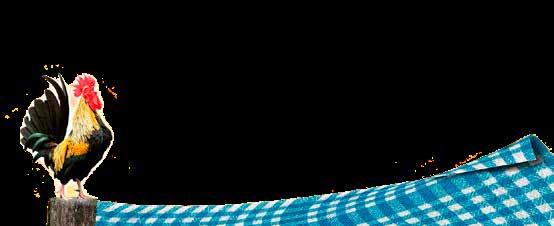


No, it’s not a new Sesame Street character or the twin brother of Elmo. EVOO stands for Extra Virgin Olive Oil and if you’re serious about your diet or following the Mediterranean Diet, the difference in olive oils is kind of a big deal. Research links olive oil to lower blood pressure, lower LDL (bad) cholesterol, and reduced inflammation. On the plus side, It’s been linked to increased HDL (good) cholesterol, reduced risk of type 2 diabetes, and reduced cognitive decline. Also, you don’t need to consume a lot, about one and half teaspoons a day to reap the benefits. In a study involving 92,000 people found that consuming a bit more than one and half teaspoons daily reduced the risk of dying from any cause by 19% compared with consuming less.
Both “extra virgin” and just plain olive oil are high in monounsaturated fats which are especially good for the heart. But EVOO has more than 200 antioxidants, including polyphenols that research suggests are responsible for much of olive oil’s positive effects. EVOO isn’t produced with heat or chemicals to extract the oil. Regular olive oil is. As a result, it has almost no polyphenols and doesn’t boost health in the same way. For example, a 2022 study found that a large group of people who consumed two table-
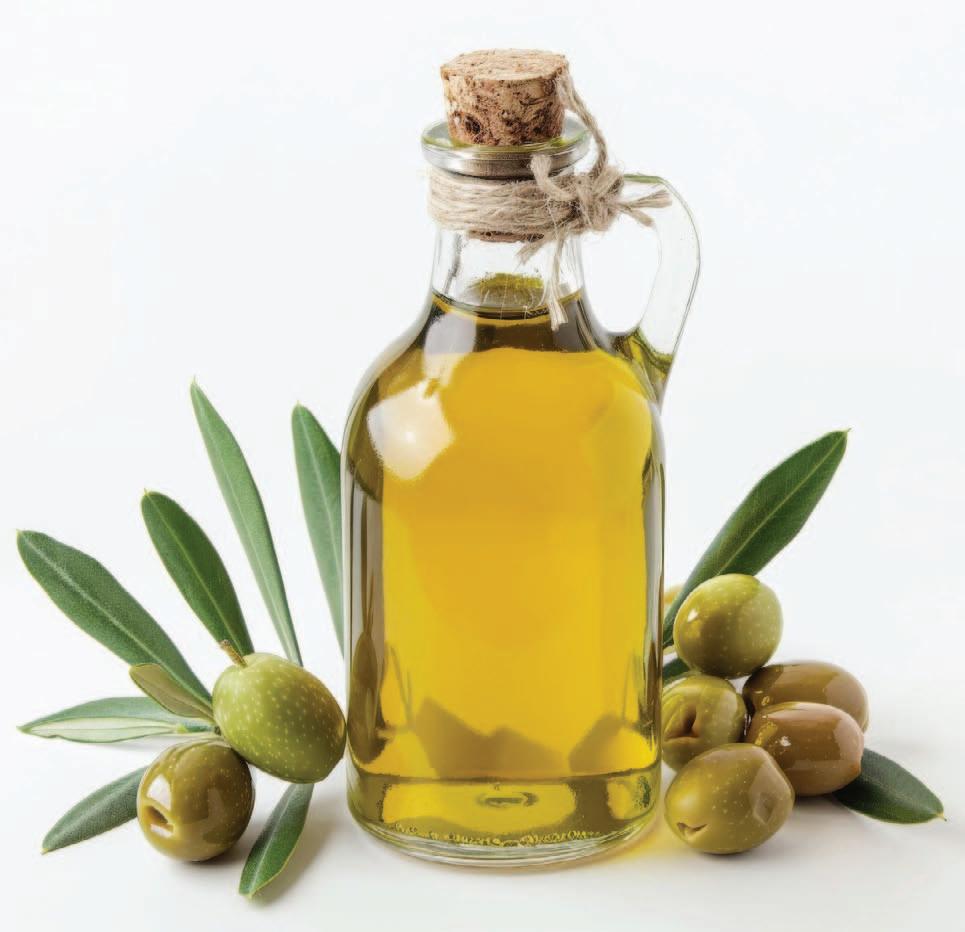
spoons of EVOO, but not olive oil, a day were 57% less likely to die from cardiovascular disease compared to those who ate none.
Some studies have suggested that EVOO has an edge over other cooking oils. There was a 2019 study that studied people over the age of
70 who used only olive oil in cooking, had higher scores on a scale of successful aging attributes than those who used olive oil and other fats. So, is olive oil, EVOO or regular, the miracle oil? No, according to some dietary health professionals. The issue that some researchers have is
that studies on olive oil have involved large groups of people whose health outcomes have been tracked over time. This suggests a correlation but not necessarily a causation. Also, if olive oil has been a consistent part of the Mediterranean Diet, other parts of the diet may be contributing to the health outcomes.
Other plant oils can also be beneficial when considering preparing food. For example, soybean and canola oils, which are mostly unsaturated, are good sources of the plant form of omega-3s. They may protect against heart disease. Olive oil, on the other hand, has almost none.
So, what’s the bottom line? Replacing saturated fats, like butter, margarine, and coconut oil, with unsaturated fat in our diets is the healthier option. However, if you’re sold on the benefits of olive oil, you can’t go wrong by incorporating it into your diet. Plus, EVOO does appear to have the leg up over regular olive oil. Just make sure that you read the label before you put the bottle in your cart.
Remember to be kind, drink your fluids, and MAKE the day great.
Till next time,
Ken Dettloff ACE
Certified Personal and Brain Health Trainer


The Kalamazoo Institute of Arts (KIA) together with the KVCC Center for New Media, Black Arts and Cultural Center, Glass Art Kalamazoo, and Arts Council of Greater Kalamazoo, is pleased to announce Sourced from the ‘Zoo, an exhibition celebrating the vibrancy of our community and its residents.
The exhibition will be on view at the KIA from Saturday, March 8, 2025, through Sunday, June 1, 2025. In addition, submissions from the community will be featured at other venues, including the KVCC Center for New Media [on view March 6-April 25, 2025], Black Arts and Cultural Center [on view April 2025], Glass Art Kalamazoo [on view March 6-April 21], and Arts Council of Greater Kalamazoo [on view March 7-April 25, 2025]. Sourced from the ‘Zoo will also feature programmatic partners including the
Kalamazoo Valley Museum, Kalamazoo Public Library (Central), Kalamazoo Symphony Orchestra, and Wellspring/Cori Terry & Dancers, among other community collaborations.
This initiative is part of the KIA’s centennial celebration, which honors our century-long commitment to connecting people and art. Sourced from the ’Zoo invites all Kalamazoo residents—whether artists or not—to share personal objects, artworks, or images that reflect the people, places, and experiences most special to them. This exciting crowdsourced exhibition was designed to foster a deeper sense of belonging and communal connection and invites participants to commemorate and celebrate their unique stories within a shared space. To inspire a variety of submissions, the exhibition will feature ten themes: Books, Literature, and


Literacy; Climate and the Environment; The Curious and Unconventional; Dance and Movement; Equity and Social Justice; Glass and Glassmaking; Life in Kalamazoo after the Pandemic; Music and Musical Instruments; People and Places in Kalamazoo; and Self-care and Wellbeing. These themes represent the diverse passions and experiences that make Kalamazoo such a rich and dynamic place to live.
“Sourced from the ‘Zoo is a powerful opportunity to celebrate the many voices that make Kalamazoo truly unique,” said Michelle Hargrave, Executive Director of the KIA. “As we continue our centennial tradition of connecting people and art, we are thrilled to invite everyone—whether artists or not—to share their stories and become part of this city-wide celebration of creativity, community, and belonging. This exhibition, along
with the dynamic conversations and programs to follow, offers a chance to reflect on and honor the remarkable diversity of Kalamazoo. Join us in making this a memorable and inclusive celebration for all.” Michelle Hargrave, Executive Director
Be part of Sourced from the ‘Zoo and help us celebrate the stories that shape Kalamazoo. This exhibition is not only about art—it’s about honoring the community that continues to make Kalamazoo a special place to live.
Sourced From the ‘Zoo Public Opening + Art Hop Friday, March 7, 5- 8pm
KNAS Hands-On Event Friday, March 7; 6 - 9pm
Fri., April 27th & Sat., April 28th
Fri., April 25th & Sat., April 26th








Calling all movie lovers! Filmmaking takes centerstage at the Kalamazoo Valley Museum’s new “Ray Harryhausen: Miniature Models of the Silver Screen” exhibit opening Feb. 1! The traveling exhibition zeroes in on Harryhausen’s contributions as a pioneer in stop-motion animation.
A special speaker will be announced in January! Keep watching the museum website at kalamazoomuseum.org for the latest.
Over 100 original and magical artifacts from the unique collection of Harryhausen, one of the great 20th century artists of stop-motion animation, will be on display up until April 27. The exhibit showcases his extensive career and importance to the art of stop-motion animation.
Through original armatured models, artwork, miniatures and props, the exhibit transports patrons back to the silver screen.
Creatures and artwork from such films as 1949’s “Mighty Joe Young,” where Harryhausen began as a technician, “The Beast from 20,000 Fathoms,” “Earth vs. the Flying Saucers,”
“The 7th Voyage of Sinbad,” “Jason and the Argonauts,” and the 1981 “Clash of the Titans” bring to life the imagination of Ray Harryhausen.
Originally, Harryhausen used stopmotion animation by posing small, sculptured creatures with movable limbs that were filmed against a miniature backdrop. Each position was shot one frame at a time. Later, he developed “Dynamation,” an animation technique that makes the live-action actors in the film appear to interact with the stop-motion creatures on screen.
Since Harryhausen’s death on May 7, 2013, and the acquisition of his collection by The Ray & Diana Harryhausen Foundation, the Trustees have been committed to continuing Harryhausen’s hopes for the future, as well as protecting and conserving his name and unique contribution to world film history. It is estimated that there are in excess of 50,000 items in the collection, including original armatures and armatured

models, hard rubber stand-in models, original molds and miniatures, original artwork, stills, negatives, screenplays, and various test and dailies footage.
Admission is free to the exhibit and the museum, which is located at 230 N. Rose St. in downtown Kalamazoo. The museum is operated by Kalamazoo Valley Community College and is governed by its Board of Trustees.







I’m grateful for my decision to leave seed-laden foliage on my pollinator garden plants. Those dead-looking stems are a virtual smorgasbord for the winter birds on these frosty cold mornings. I suspect that the heads of the coneflowers and other daisy relatives are long gone, and the birds are foraging for whatever is left. Recently, I’ve seen numerous house sparrows and finches dining on butterfly bush and evening primrose seeds. No need to thank me, little ones! I’m happy to help.
Since I’m no longer too busy working to enjoy such deep thoughts, I’ve begun wondering how birds survive these cold mornings. Yes, they huddle together to keep warm, and who doesn’t enjoy a good cuddle? Many songbirds seek the shelter of tree branches (especially conifers) to block the wind. But even those behaviors seem inadequate. Many birds that remain in Michigan all year maintain normal body temperatures as much as two degrees Fahrenheit higher than is typical of humans. If I’m still cold in my puffy down jacket, knit hat, and gloves, how do they do it? And those skinny, bare little legs and feet? I can’t even imagine!
Nature has provided some wonderful and practical strategies that assist overwintering birds in this season of harsh extremes. It even appears that humans – the ultimate rip-off artists of Mother Nature - have successfully emulated some of them. Let’s think about the jacket that I’m so crazy about. The down “filling” is a byproduct of the Asian meat industry. Mostly ducks and some geese, numbering in the millions, are processed for food. Their under feathers are a lucrative second market, providing, according to the Audubon Society, over a quarter million metric tons annually! Down is an excellent insulator, with many tiny pockets holding warm air while adding very little weight. When we see a bird fluffing itself out, it is, in effect, putting on its own down jacket. Down does not, however, maintain its insulating qualities very well when it gets wet. Winter campers know one signifi-
cant requirement for staying warm in extreme conditions is to stay dry. Survival is much more perilous when a camper (or bird) gets wet. That’s when a bird takes advantage of its water-resistant plumage feathers. This “shell,” so to speak, has been coated with special oils produced by glands under the skin near the tails of many birds. When birds preen, they clean themselves and distribute this waterproofing aid. My coat has a protective nylon cover over the down; theirs has beautiful feathers.
Bird feet don’t have feathers or even down. The outer tissue on bird extremities is naturally waterproofed and thickened with scaly skin that resists water. This is especially true of waterfowl. Birds also fly to dry their feet if they get wet. Since winter air, especially if it’s cold, is less humid, a quick flight is an efficient way to dry off between the toes, webbed or not.
The most interesting bird survival phenomenon is a physiological adaptation that keeps their feet warm. Known as counter-current heat exchange, the bird’s circulatory system has provided a strategy that protects those skinny little legs from freezing. Arteries carry warm blood from the body’s core into the legs and feet, forming a complex system of smaller and thinner vessels. Clustered around them is a similar venous system that carries blood back into the body and back to the heart for recirculation. Remembering, as I know you do, that heat flows from warm to cold, the arterial blood leaving the toasty (?) bird body exchanges heat with the separate but parallel, relatively colder venous blood and returns for a temperature recharge and repeat. Since bird legs and feet are typically tiny, compared to their body size, and their metabolic rate is so high (the better to maintain that higher body temperature), the exchange is repeated over and over, sufficient to keep their feet warm enough to prevent freezing since their blood travels through the system so quickly. No toasty toes, mind you, but warm enough… This is similar to what happens inside a tankless hot water heater.
Cold water enters, either from the municipal source or local well, and is superheated in an on-demand boiler. It then passes through a set of long, thin tubes parallel to a set carrying colder water. Because the system has a large surface area to volume ratio, heat flows to cold quickly and efficiently, and the newly warmed water is distributed around the house. I spoke with Justin Schoetzow, a manager at Gale’s Hardware on Stadium Drive, and Ben Kahler, from Belaire Heating and Cooling, who confirmed the similarities. Do you think that the engineers who designed these modern, energy-efficient systems were birders?
Of course, it’s common to see waterfowl sitting or standing on frozen lakes, or even swimming in icy waters, sometimes for hours on end. Seems like a bad idea to me, especially since duck feet seem so large compared to those of a bluejay or cardinal. Counter-current heat exchange is the bird’s primary adaptation. When conditions are harsh, it’s common to see them “tuck.” A tucked bird conserves heat by drawing up one leg and wrapping it in its wings around its body to provide shelter from the cold. They might also tuck their bill under a wing as well. Periodically, as conditions require, the bird will switch from one leg to the other. According to the Ducks Unlimited Canada website, studies show that only about 5% of a duck’s body heat is lost through its feet, even on the ice.
All these wonders of avian adaptability rely, of course, on adequate nutrition. According to MLive, citing both the Michigan DNR and the Great Lakes Audubon websites, food resources are critical. Of particular importance is feeder hygiene. The Audubon source recommends trying to keep liquid water in birdbaths. That’s tough, I know, when everything is frozen, but proper positioning to catch any winter sunshine can be helpful, and trying to keep the bath out of the frigid wind in a sheltered area can make a difference. Equally important is the necessity of
cleanliness. They recommend thoroughly cleaning feeders at least every two weeks with a 10% bleach water solution followed by a rinse, dry, and refill, discarding used seed in the trash so that it doesn’t wind up on the ground attracting vermin and microorganisms.
Of course, with bird flu continuing to threaten birds, cows, and even people, such precautions are especially vital. As we plan our spring planting, it may be time to consider some cozy bushes and flower species that will provide food and shelter for next year’s feathered friends when temperatures plummet. In the meantime, enjoy those catalogs and warm your own toes by the fire!
Cheryl Hach Retired Science Teacher Kalamazoo Area Math and Science Center
References: (2024, February 6). How do ducks’ feet stay warm in winter? Ducks Unlimited Canada. Retrieved February 2, 2025, from https://www.ducks.ca/ stories/science/how-do-ducks-feetstay-warm/ Greij, E. (2024, July 31). Eldon Greij explains the clever way birds keep legs and feet warm. Bird Watching Daily. Retrieved February 7, 2025, from https://www.birdwatchingdaily.com/news/science/ eldon-greij-explains-clever-waybirds-keep-legs-feet-warm/ Del-Colie, A. (2024, January 24). How do birds cope with cold winter weather? Audubon Magazine News. Retrieved February 4, 2025, from https://www.audubon.org/magazine/ how-do-birds-cope-cold-winterweather Ford, E. (2022, February 7). The dos and don’ts of winter bird feeding. Audubon Great Lakes. Retrieved February 7, 2025, from https:// gl.audubon.org/news/dos-anddon%E2%80%99ts-winter-birdfeeding
Through Sunday, Jan. 5, 2025 Exhibit: Secret Societies Illuminated In Kalamazoo, Kalamazoo Valley Museum
Saturdays, Mar. 1,8,15,22 Kalamazoo Winter Market, 8am-1pm, 936 Lake St. St. Joe’s Church gym.
Sat., Mar. 1 – Sun. Mar. 2 Craft Show, Sat. 9-3, Sun. 10-3 Kalamazoo County Expo Center
Saturday, March 1
Art Detectives: Tap! Tap! Tap!: Dance! Dance! Dance! 11am-4:14pm, Comm-Unity Day: Movement & Play, 10:30-3pm, Kalamazoo Institute of Arts
Saturday, March 1
Dr. Seuss Extravaganza!, 10am, Parchment Library
Saturday, March 1,8,15,22,29 Retro Cartoon Brunch, 11am –2pm, Presidential Brewing Co.
Saturdays, Mar. 1,8,15,22,29 Live Music, The Dock @ Bayview, 8pm
Sundays, Mar. 2,9,16,23,30 Portage Farmer’s Market 9am-1pm, Portage City Hall
Mondays, Mar. 3,10,17,24,31 Parchment Update Interviews Parchmentlibrary.org
Mondays, Mar. 3,10,17,24,31 Family Storytime, 10-10:45am Books, songs. Vicksburg Library
Mondays, Mar. 3,10,17,24,31 Jazz Night, 6-9pm Apoptosis Brewing Co., Kal.
Monday, March 3
Visible Mending with Lori Evesque, register required, 6:30pm, Parchment Library
Tuesdays, Mar. 4,11,18,25 Preschool Story Time, ages 3-5, 10:15, Richland Library
Tuesdays, Mar. 4,11,18,25 Drop in Gaming, 3-5pm Richland Library
Tuesdays, Mar. 4,11,18,25 Trivia at Sit & Stay Winery, 6-8pm, 260 E. Michigan Ave., Kal.
Tuesdays, Mar. 4,11,18,25 Trivia @ 468 Wine, 6:30-8:30, 8842 Portage Rd., Portage
Tuesday, March 4,18 Laugh Draft stand-up comedy, 7-9pm Apoptosis Brewing Co., Kal.
Tuesdays, Mar. 4,11,18,25
Theme Trivia Tuesdays, 7-9pm, Revel and Roll West
Tuesdays, Mar. 4,11,18,25
Trivia Night, 7-9pm Louie’s Trophy House
Wednesday, Mar. 5
Mugs & Hugs – Stories, Activities & Interaction, 10-11am, Vicksburg Library
Wednesdays, Mar. 5,12,19,26
Wednesday Wigglers, 10:15am (Infant-Toddler) Richland Library
Wednesdays, Mar. 5,12,19,26
Teen Dungeons & Dragons, 3-5pm, Register ahead 629-9085, Richland Library
Wednesday, March 5
Trivia Night at 468 Wine 6-8pm, 468 Wine in Portage
Wednesdays, Mar. 5,12,19,26
Trivia in the Taproom, 7-9pm,
Wednesday, March 5
Karaoke Bingo, 7-10pm Presidential Brewing Co.
Wednesday, March 5
Acoustic Roulette at the Bird, 7-11pm, Thunderbird River Ranch
Thursdays, Mar. 6,13,20,27
Free Thursdays, 11am-8pm Kalamazoo Institute of Arts
Thursdays, Mar. 6,13,20,27
Teen Dungeons & Dragons
4:30-6:30pm, register ahead 629-9085, Richland Library
Thursdays, Mar. 6,13,20,27
Triple Threat Trivia, 6:30pm Presidential Brewing Co.
Thursdays, Mar. 6,13,20,27
King Trivia, 7-9pm, Gull Lake Distilling Co., Galesburg
Thursdays, Mar. 6,13,20,27
Trivia at Buddy’s Pizza, 7pm
Fridays, Mar. 7,14,21,28
Family Story Time, 10:15 All ages, Richland Library
Friday, March 7
Memory Café – for people with Mild dementia and their care Partners, 10:30am – Noon, Paw Paw District Library
Friday, March 7
Youth Book club, grades 1-5 Fun & discussion. Sign up To receive a free copy of book Richland Library
Friday, March 7
First Friday, local artists, music, food & shopping, downtown Kalamazoo, 5-8pm
Fridays, Mar. 7,14,21,28
Quickdraw Trivia, 7-8:30pm Valhalla/Norse Nectar Meadery
Fridays, Mar. 7,14,21,28
Live Music @ The Dock at Bayview, 8pm-12am
Saturday, March 8
Internet Users Group, 10am
Noon, bring your smart phones, Mobile devices & questions Paw Paw District Library
Sunday, March 8
Spring Fling Craft Fair, 10am3pn, Girl Scouts Heart of MI
Sunday, March 9
2nd Sundays Live! Whiskey Before Breakfast, 2pm Parchment Library
Monday, March 10
Reading Together/Parchment Book Group, Solito by Javier Zamora, 6pm, Parchment Library
Wednesday, March 12
Birds & Coffee Chat on Zoom 10-11am, birdsanctuary@kbs.msu.edu
Wednesday, March 12
Book Discussion: Solito: A Memoir, 2-3pm, Kalamazoo Institute of Arts
Thurs., Mar. 2 – Thurs., Mar. 13
Sign up for Personalized book Recommendations and treats in a box, Vicksburg Library
Thursdays, Mar. 13 & Mar. 27
Teen Break & Bulldog Break Crafts, games, treats, more! 2:45-5:45pm, Vicksburg Library
Thursday, March 13
Adult Writers’ Motivational Group 4-5pm, Vicksburg Library
Thursday, March 13
Gallery Gathering: An Infinite Constellation of Love, 5:30 6:30pm, Kalamazoo Institute Of Arts
Thursday, March 13
STEAM, hands-on activities & Problem solving, 6-7pm Vicksburg Library
Sat., Mar. 15- Sun. Mar. 16
Free Pancake Breakfast, Sugar Bush tour, tap maple trees, more! 10am – 4pm, Butternut Creek Sugar Shack, Mendon
Saturday, March 15
St. Patrick’s Day Parade 11am, Downtown Kalamazoo Mall
Sunday, March 16
WMU Student Chamber Ensembles, 3pm, Milwood United Methodist Church, Kal.
Monday, March 17
STEAM, hands-on activities & Problem solving, 11am-noon Vicksburg Library
Tuesday, March 18
LEGO & DUPLO Club, 5:306:30pm, Vicksburg Library
Tuesday, March 18
Mystery Book Club: A Line To Kill by Anthony Horowitz 6:30pm, Parchment Library
Wednesday, March 19
ArtBreak: Connecting Chords/ Engaging Drums, 12-1pm Kalamazoo Institute of Arts
Thursday, March 20
Joy Light Lecture Series: Exploring the Power of Visual Art and World-Building, 6-7pm Kalamazoo Institute of Arts
Thursday, March 20
The Heartbreak Book Club, Thank You For Listening, by Julia Whelan, 6:30-7:30pm Paw Paw District Library
Thursday, March 20
Slaptail Nation Presents: Slap Your Tail Comedy- Open Mic Doors open 7am, show 7:30pm Dormouse Theatre, Kalamazoo
Friday, March 21
Night Shop – Vintage in the Zoo, 5-10pm Louie’s Trophy House
Fri., Mar. 21 – Sat., Mar. 22 20th Annual Kalamazoo FretBoard Festival, Kalamazoo Valley Museum
Saturday, March 22
Indoor Flea Market, 9am-3pm Kalamazoo County Expo Center
Saturday, March 22
Grief Circle, 10am-Noon Rootead Kalamazoo
Monday, March 24
Silent Book club, 5:15pm Parchment Library
Monday, March 24
Oberon Day, 11am-10pm Bell’s Eccentric Café’
Tuesday, March 25
Silent Book Club, 10:15am Parchment Library
Tuesday, March 25
Meet Michigan Author: Michael Delaware, 6-7pm, Richland Library
Tuesday, March 25
The Memory & Legacy of Emmett Till, 6-7pm, Paw Paw District Library
Tuesday, March 25
Birds On A Wire, 7:30pm, WMU Dalton Center Recital Hall
Wednesday, March 26
ArtBreak: The Art of Puppetry 12-1pm, Kalamazoo Institute of Arts
Wednesday, March 26
Silent Book Club, 1:15 Parchment Library
Thursday, March 27
Between the Lines Book Club, The Dog of the North by Elizabeth McKenzie, 6:30-7:30pm, Paw Paw District Library
Fri., Mar. 28 – Sat., Mar. 29
KazooPex Stamp & Cover Show 10am-5pm, Kalamazoo Expo Ctr.
Saturday, March 29
Friends of the Library Book Sale, 9am-1pm, Parchment Library
Saturday, March 29
Allegan Folklife/Music/ Art Festival, food, music Workshops, arts/crafts, more 10am-8pm, Allegan High School
Monday, March 31
Steve Wolfinbarger Retirement Celebration – Featuring the WMU Trombone Choir & Alumni Trombone Choir, 7:30pm Dalton Center Recital Hall

